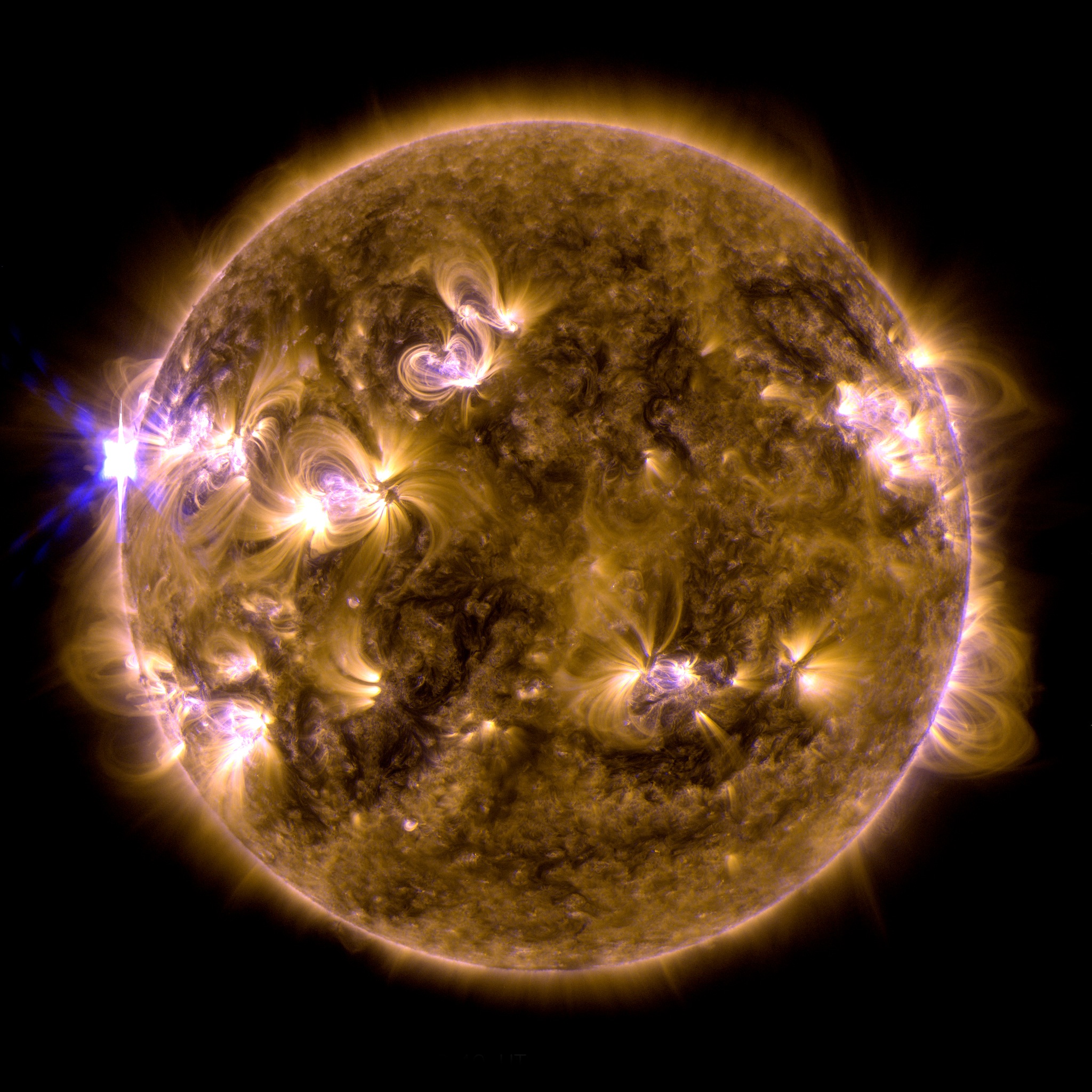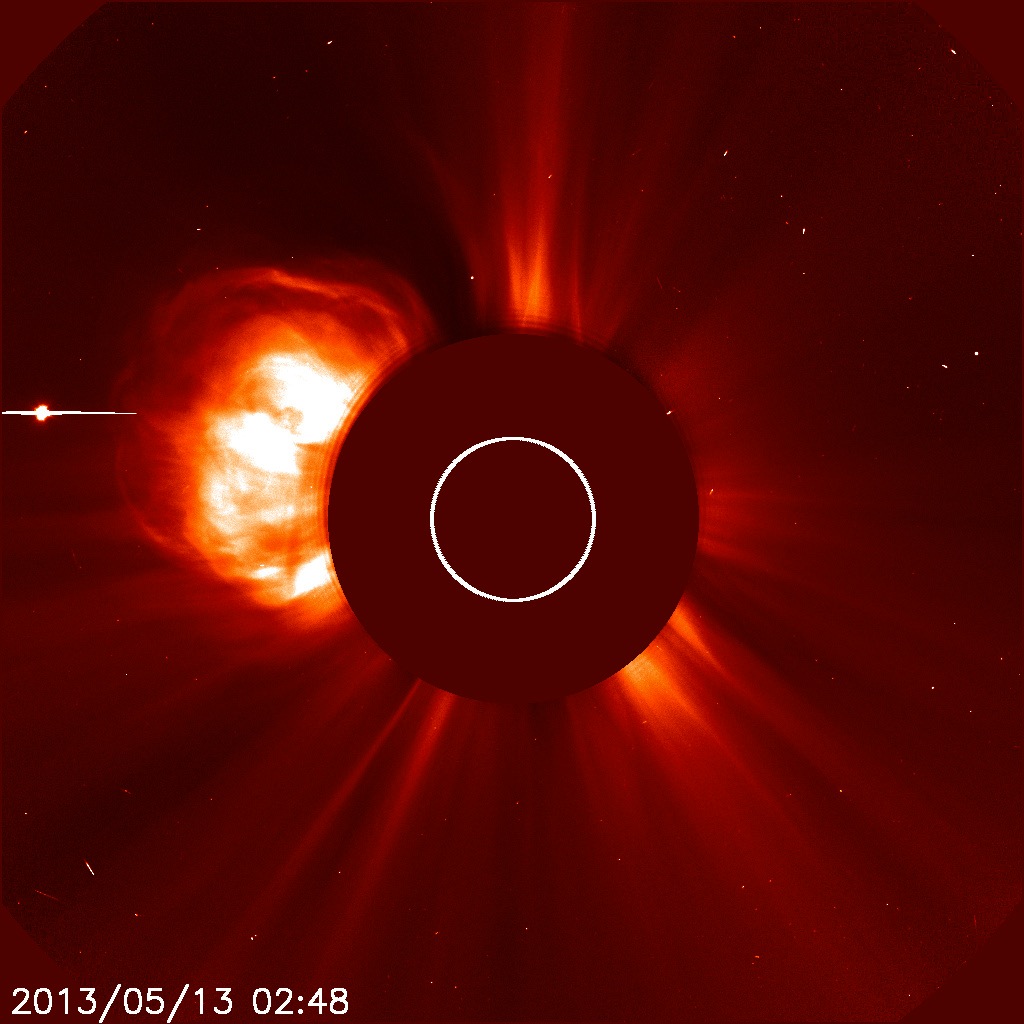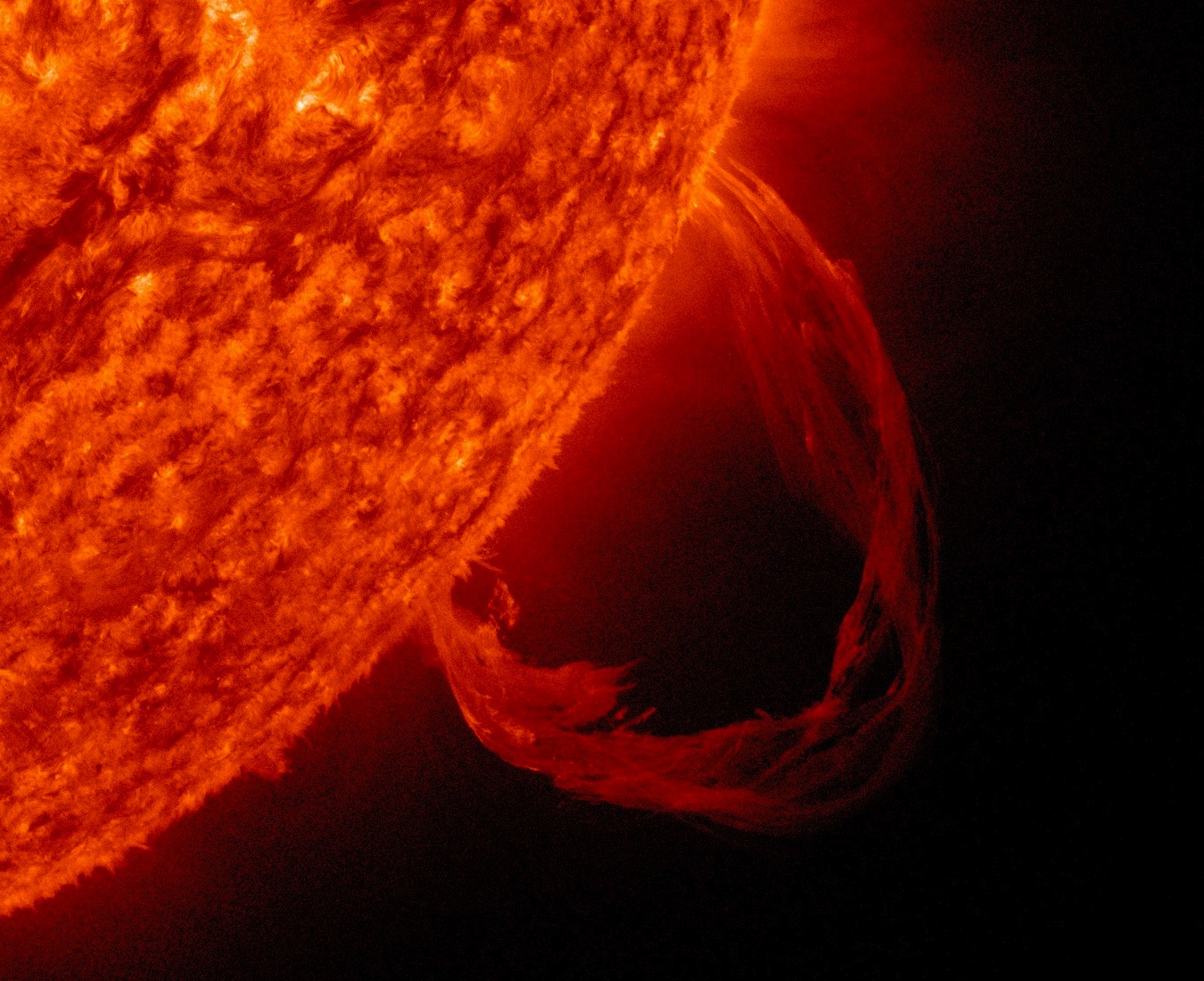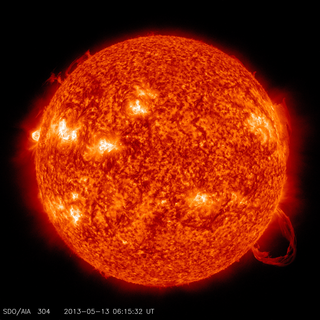

| Visitors Now: | |
| Total Visits: | |
| Total Stories: |

| Story Views | |
| Now: | |
| Last Hour: | |
| Last 24 Hours: | |
| Total: | |
First X-Class Solar Flare Of 2013
The sun erupted with an X1.7-class solar flare on May 12, 2013. This is a blend of two images of the flare from NASA’s Solar Dynamics Observatory: One image shows light in the 171-angstrom wavelength, the other in 131 angstroms.

Credit: NASA/SDO/AIA
Solar flares are powerful bursts of radiation. Harmful radiation from a flare cannot pass through Earth’s atmosphere to physically affect humans on the ground, however — when intense enough — they can disturb the atmosphere in the layer where GPS and communications signals travel. This disrupts the radio signals for as long as the flare is ongoing – the radio blackout associated with this flare has since subsided.
“X-class” denotes the most intense flares, while the number provides more information about its strength. An X2 is twice as intense as an X1, an X3 is three times as intense, etc.
This flare erupted from an active region just out of sight over the left side of the sun, a region that will soon rotate into view. This region has produced two smaller M-class flares as well.
On May 12, 2013, an X1.7-class flare and a coronal mass ejection, or CME, erupted off the upper-left side of the sun. Solar material also danced and blew off the sun in what’s called a prominence eruption, both in that spot and one on the lower right side of the sun. This movie compiles imagery of this activity from NASA’s Solar Dynamics Observatory and from NASA and the European Space Agency’s Solar and Heliospheric Observatory.
Credit: NASA/SDO/ESA/SOHO
The May 12 flare was also associated with a coronal mass ejection, another solar phenomenon that can send billions of tons of solar particles into space, which can affect electronic systems in satellites and on the ground. Experimental NASA research models show that the CME left the sun at 745 miles per second and is not Earth-directed, however its flank may pass by the STEREO-B and Spitzer spacecraft, and their mission operators have been notified. If warranted, operators can put spacecraft into safe mode to protect the instruments from solar material. There is some particle radiation associated with this event, which is what can concern operators of interplanetary spacecraft since the particles can trip computer electronics on board.
Increased numbers of flares are quite common at the moment because the sun’s normal 11-year activity cycle is ramping up toward solar maximum, which is expected in 2013. Humans have tracked the solar cycle continuously since it was discovered in 1843, and it is normal for there to be many flares a day during the sun’s peak activity. The first X-class flare of the current solar cycle occurred on Feb. 15, 2011, and there have been another 15 X-class flares since, including this one. The largest X-class flare in this cycle was an X6.9 on Aug. 9, 2011.
The sun erupted with an X1.7-class solar flare on May 12, 2013. This is a blend of two images of the flare from NASA’s Solar Dynamics Observatory (SDO) — one image shows light in the 171 Angstrom wavelength, the other in 131 Angstroms.

Credit: NASA/SDO/AIA
NOAA’s Space Weather Prediction Center (http://swpc.noaa.gov) is the U.S. government’s official source for space weather forecasts, alerts, watches and warnings.
SOHO LASCO C2 image of the May 13, 2013 associated CME.

Credit: ESA&NASA/SOHO
SDO 304 Angstrom image of prominence eruption. Cropped.

SDO 304 Angstrom image of prominence eruption.
Contacts and sources
Karen C. Fox
NASA’s Goddard Space Flight Center, Greenbelt, Md.




My lettuce bit the dust in just a few hours.
Our beautiful sun!